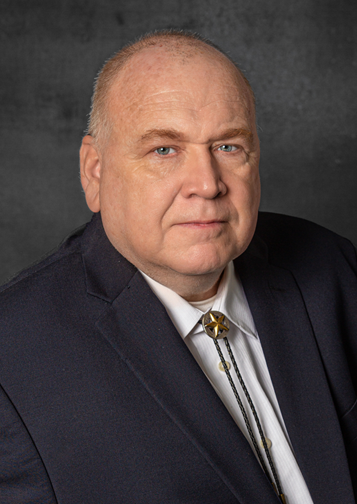Completed Patents
Two-thirds of patent applications make it through the system to become a patent.
Half of the patents that get issued make back the money it took to get the patent.
PATENT: US D827,736
Ergonomic Strength Conditioning Grip
A design patent also covered by US Utility Patent 10,758,768, the “Ergonomic Strength Conditioning Grip” clips to cable-type weight lifting gym machines. Whether held like a pear or an ice-cream cone (eyelet up or down,) it gives the user a “neutral grip” which is surprisingly comfortable. As the user’s fingers find their own natural purchase points in the grooves of the grip, the user can exercise the full strength of the muscles of the shoulders and upper back without discomfort or fatigue in the wrist.
PATENT: US 9,751,559, 10,279,828, 10427,703 and 10,494,007
No Lift System
Granite countertops can actually be quite fragile, especially if they have holes cut out for sink basins. This machine safely transports granite slabs without twisting (breakage) on soft squishy tires for a gentle ride from the truck.
A motor-driven pivoting frame eliminates back-breaking lifting and twisting tasks and greatly reduced injuries and lost time for the install crews.
PATENT: US 9,776,550, 10,239439 and 11,193,556
Self Load Binder
Safe, Easy, Light, Fast®
A load binder with a gearbox can be driven by a socket tool or air wrench instead of the typical lever, which can whip around and hit you if it escapes your grasp. The mechanism may also be adapted as a jack or a top link for tractor implements.
PATENT: US 10,852,104 and 10,852,104
Rifle scope mounting system
A continuation-in-part application of US Patent 10,352,668, these patents protect a scope mounting system with which a rifle shooter can finely adjust the distance between the scope and his or her eye. The mount blocks are reversable with the pitches of the pins or grooves in the scope being offset from the spacing of the Pickatinny rail, which allows an addtional layer of fore and aft adjustment of the scope along the rail.
PATENT: US 10,806,134
Fishing rod holder
This three-axis adjustable fishing rod holder can clip to almost any part of a boat’s railing, stanchions, or other tube structures of the vessel. Once secured, the rod holder can be set for the rod to suspend a lure at a stable and precise desired location while relaxing or attending to other tasks onboard.
PATENT: US 10,775,125
Grip Training Aid
This invention has several different variations that are all covered by the same set of claims. Accurate pistol shooting depends on a shooter keeping a strong solid grip on the handle of the weapon with the lower fingers of the hand while simultaneously executing fine motor control of the trigger finger. The simpler version allows the exerise springs to be adjusted independently so that the lower fingers squeeze hard while the upper finger squeezes gently. The more advanced version includes internal lockouts so that its model trigger cannot be pulled unless the grip safety has been squeezed in evenly along its length. A correct trigger pull emits a laser light which can be used to gain point-and-shoot accuracy while not sighting along the weapon.
PATENT: US 9,356,394
Self-Rejecting Connector
This connector snaps on to the squib for an automotive airbag. This invention solves problem of a careless or inattentive auto worker who didn’t push the cable in all the way, so it electrically tests ‘OK’ at the factory, but after years and miles of driving the cable works loose – and the airbag fails to deploy in a crash. To make sure the wiring gets properly connected, the latching and locking mechanisms of the connector will pop the connector off the airbag UNLESS it has been fully inserted and snapped in for good at the factory.
PATENT: US 6,236,876
Navigable Probe and Motor Control Apparatus
This is a surgical apparatus which can bend a probe being inserted into a branching vessel such as a bronchial tree or blood vessel so that the probe tip can better “choose” which path to follow as it is being inserted. The paired cables steer the probe up/down or left/right and can even curl probe tip back upon itself (to roughly the size of a candy cane curl, for a 3/8in tubular probe.) This device causes far less damage by alleviating a surgeon from having to ‘poke’ numerous times while trying to avoid the probe tip from ‘going down the wrong pipe.
PATENT: US 6,530,802, 6,682,077 and 6,692,232
Tesla turbine
A selection of images from my Tesla turbine research and development project with Frank Germano, Martin Dorantes, and Tad Johnson. These are hand-sketched images of the successful prototypes we built and tested in the years circa 2000 – 2002.
About Guy Letourneau
"That Patent Guy"®

Over 30 years experience in mechanical engineering including two dozen patentable inventions in various industries.
Wrote and self-prosecuted (3) Tesla turbine engine patents.
Registered to practice patent law before the USPTO, 2014.
Passed the Professional Engineering licensing exam in mechanical engineering in 1994.
Written and processed over 110 patents in the last 10 years.
BSME from University of Massachusetts Amherst, 1985.
MBA from Heriot-Watt University in Edinborough, Scotland 2000.